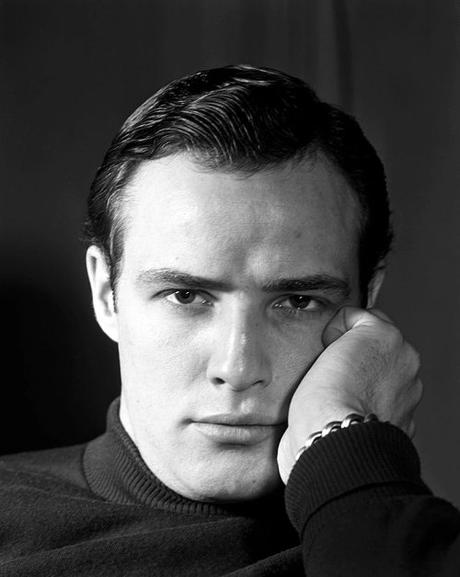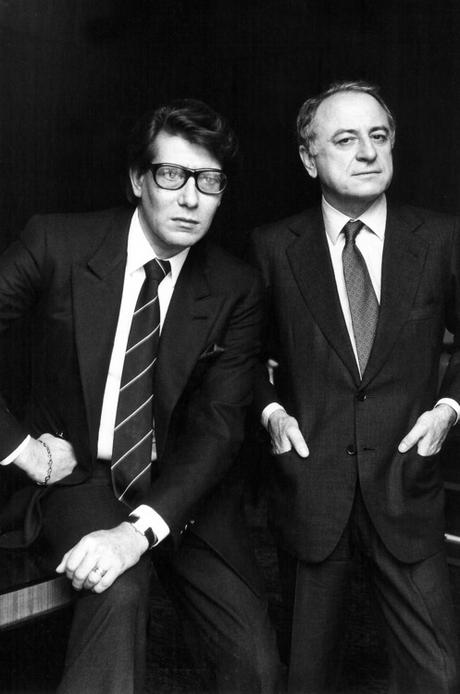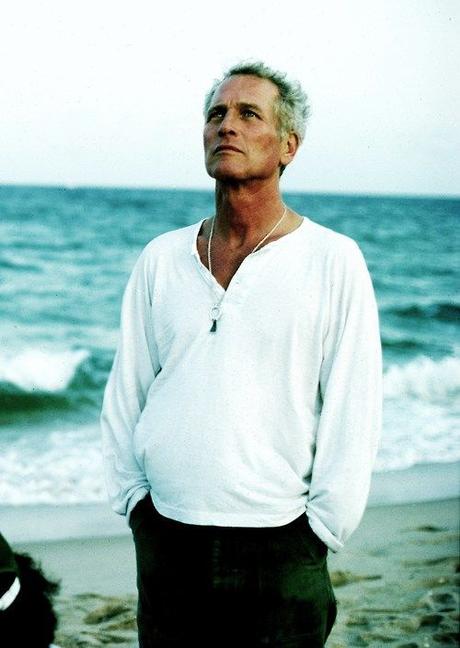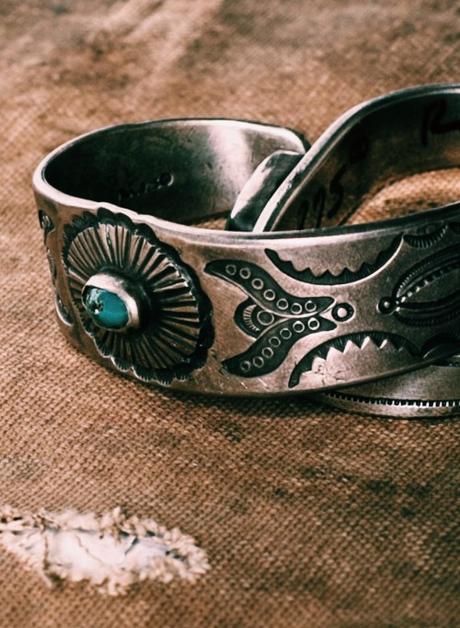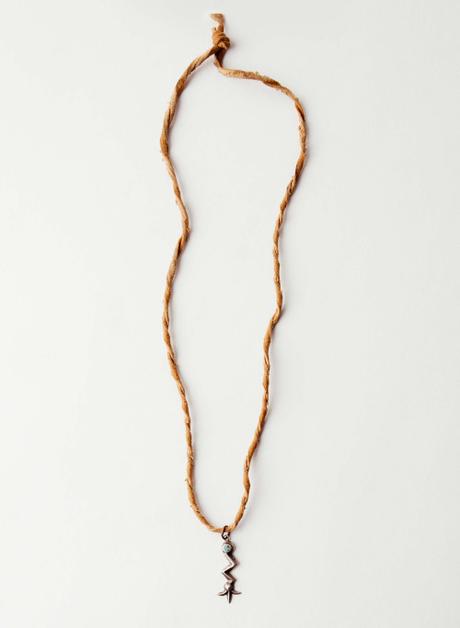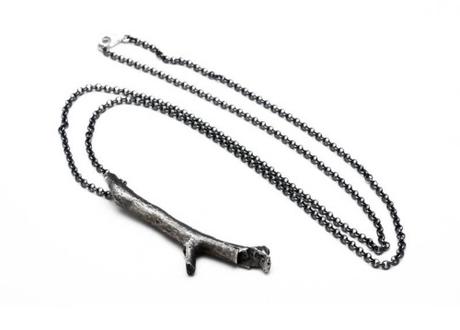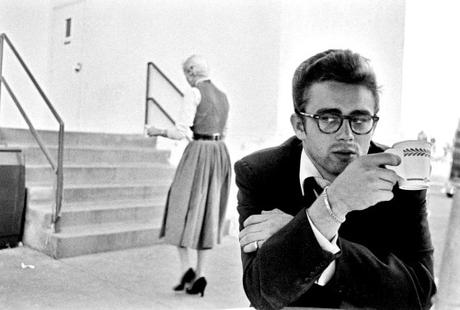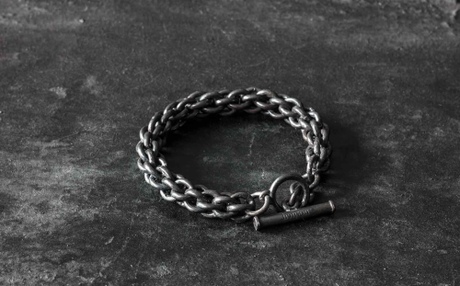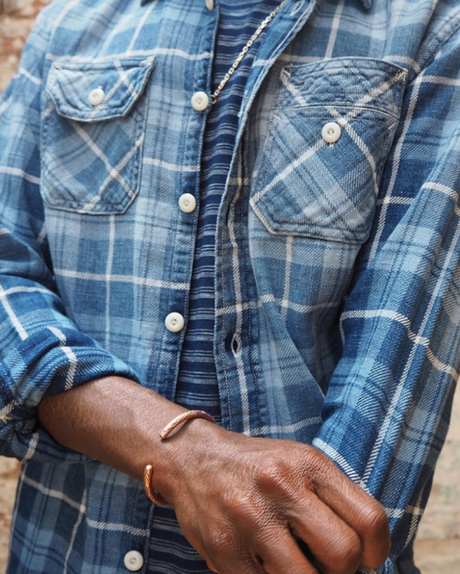
To understand male fashion today, you have to go back to The Great Masculine Renunciation. Somewhere around the time of Beau Brummell and The French Revolution, European elites traded their sumptuous garb for utilitarian clothes that underscored their commitment to work over aesthetics. Ornate fashion was for women, not “serious men” focused on living out a life of the mind. The difference between these two eras couldn’t be starker. Just compare how extravagantly King Louis XIV dressed to the sobriety of President Macron.
This split in history, which divides men’s dress like the BC and AD periods of the Gregorian calendar, explains our attitudes towards male jewelry. Jewelry has a strange place in the world of men’s accessories. Scarves, gloves, and wristwatches are acceptable because of their utility; pocket squares and neckties are OK for no other reason than tradition. But once you get beyond a modest wedding band, the idea of a man wearing something ornate, expensive, and metal seems tacky. They offend a certain sensibility we find difficult to pinpoint or even justify, but nonetheless stand by.
After the Second World War, jewelry has come in and out of fashion depending on how we feel about gender and class. In the 1970s, when it was socially acceptable for men to show a more feminine side, hippies and counter-culture types wore bracelets and necklaces; high-flying business elites wore flat links with pinstriped suits in the ‘80s; and surfers have been known to use Saint Christopher medallions as good luck charms. Throughout these periods, many men have worn jewelry well – even magnificently. Like others in the Harlem Renaissance, Langston Hughes occasionally wore a silver onyx ring to show a bit of personality. Marlon Brando, James Dean, and Paul Newman sported chunky, silver ID bracelets with jeans and t-shirts. And Yves Saint Laurent, one of the chicest to ever wear a suit, accessorized with a precious metal bracelet.

THINGS TO CONSIDER
Jewelry can be a great way to personalize an outfit. After all, few other things have such rich meaning – from religious symbolism to cultural references. I wear jewelry year-round, but find they’re especially useful in the summertime when you can’t put on anything more than a camp collar shirt and some trousers. When it’s too hot outside for layering, small choices can make a big impact.
Years ago, Jesse at Put This On described this as having a point of distinction – the ways in which you can transform a generic outfit into something more personal. “It’s easy to pile wild choice on top of wild choice, or conversely to make nothing but down-the-middle clothing decisions. To choose to demonstrate understated mastery and nonetheless show distinction is much more difficult.” There’s a huge middle ground between the outrageous and the snoozy, and developing a personal sense of style is often about steering a line between those two extremes.
So, how do you wear jewelry well? Like anything that may be in your wardrobe, I find it’s about learning a visual language (as Hardy Amies said, if it looks right, it is right). There are three things, however, that are good to keep in mind if you decide to explore which avenues, if any, are right for you.
Be Aware of the Social Connotations
Precious metal jewelry started falling out of favor in the 18th century because of the rising tide of democracy. With some notable exceptions, elites risked their lives if they wore flashier, more ornate styles, which explains why men’s dress became so discrete and austere. Ironically enough, sensibilities today have reversed. Jewelry is now eschewed for being associated with the lower classes – casino money pit bosses, used car salesmen, criminals, thugs, and arrivistes. Like shirt collars worn over lapels, costume designers use gold chains to portray someone as an overconfident lowlife.
This stigma is far from universal, but depending on where you live, it can also be inescapable. I don’t think that’s necessarily a bad thing, however. Not all fashion is about looking elegant, just as not all music is classical or all paintings about flowers. Just don’t have any illusions about how you look. Depending on your culture, wearing jewelry as a man can come with certain social connotations.

Think About the Total Look
Like any potentially trendy item, you want to use these tactfully and not bluntly. Don’t think of jewelry as a way to make an outfit edgy or cool. Instead, use it as a way to create a total and cohesive look. Deconstructed and avant garde fashion lines, such as Margiela and Lemaire, can be accessorized with similarly minimalist jewelry pieces in interesting shapes. Workwear and Americana, on the other hand, plays well with Native American cuff bracelets and chunkier necklaces. For more refined casualwear, such as what you’d find at Stoffa or Eidos, you can wear a discrete signet ring. I also find sterling silver goes nicely with cooler colors such as blue, grey, and black. Yellow gold, on the other hand, can be good with warmer tones in brown.
It’s harder to pull off jewelry with suits and sport coats. Doing so well takes a certain panache, otherwise it can be like painting a mustache on the Mona Lisa. I think jewelry in these contexts is usually best when it’s discrete, such as how Mariano Rubinacci wears a Kabbalah bracelet with his Neapolitan suits. It also helps if you already have some charm and grace. Proceed with caution.
Focus on Personal Satisfaction
With the above said, perhaps more than anything else in your wardrobe, jewelry should be about personal satisfaction. While the right piece can elevate a look, bracelets still mostly stay hidden underneath a cuff, necklaces behind a shirt. The pieces I love to wear most are almost purely about personal satisfaction, like the pleasure you’d get from wearing a mechanical watch.
This can mean buying something precious, perhaps made from sterling silver or gold. Or it can mean wearing something that has sentimental meaning. Whatever it is, make it special. It can be hard to know whether something will be special to you for years and years before buying it, but you probably know in your gut if something doesn’t stand a chance in the first place. Avoid tchotchkes, doodads, gewgaws, and what-have-yous.

MY PERSONAL COLLECTION
I mostly wear jewelry with workwear and contemporary casualwear, almost never with tailored clothing. And above are the pieces I reach for most. There are a couple of necklaces from Article 22, a company that’s working with international organizations to remove landmines and unexploded bombs from Laos’ countryside. Metal from those bombs are then recycled and made into spoons, bracelets, and necklaces. Those pieces have a special place in my heart since my family escaped Vietnam during the war.
I also have some Native American jewelry, such as a double feather necklace, chunky cuff bracelet, and twisted wire bracelet. I find these go especially well with workwear. They have a classic sensibility without resorting to masculine cliches, which is hard to find in this field. When shopping for Native American jewelry, beware of counterfeits. I think it’s important to find pieces that were made by actual Native Americans and aren’t just reproductions inspired by their style. I buy from Self Edge and Len Wood’s Indian Territory Gallery, two shops I trust, although there are dozens of reputable shops and art markets dotted across the American Southwest.
There are three other pieces above – a hook bracelet from Hermes, a casted ring from Neff Goldsmith, and some necklaces with vintage Catholic pendants. Three of those pendants are hanging from a repurposed watch chain, like a gentleman would have once used for a pocket watch. That’s actually my favorite piece, but I found it at a local shop. Which is maybe reason to scour your local jewelers for vintage and estate finds.
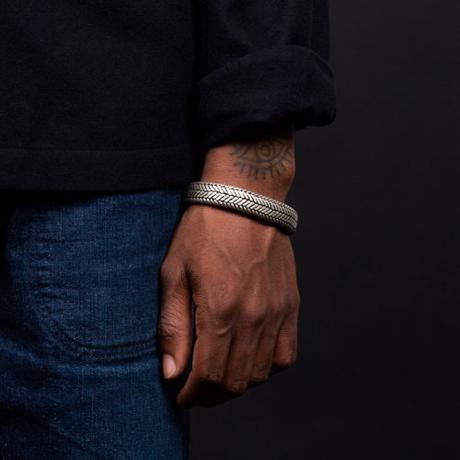
RECOMMENDABLE BRANDS AND STORES
Favorite Stores: I’m really into the jewelry selection at Self Edge and Reliquary these days. Self Edge carries a great range of pieces from Good Art Hlywd and Neff Goldsmith, both of which I think are exceptional in terms of both craft and design (Blamo! has a nice interview with Josh Warner from Good Art). I’m also proud of the selection at Put This On, a site I work for. Jesse, an inveterate thrifter, brings in various things he finds at flea markets and estate sales. I like that our prices are a bit more reasonable than other “curated vintage” shops.
Contemporary Brands: Styles here don’t have to be so cleanly delineated. Sometimes a certain ring or bracelet can work in unexpected contexts, depending on the design. That said, I find certain brands to be better suited for contemporary casualwear than others. Think of labels such as Maison Margiela, Lemaire, or Rick Owens. Maybe even contemporary-classic brands such as Camoshita.
For these styles, check out the clean minimalism at Jill Platner, James Colarusso, Christian Kimber, Macha, and Margiela. The edges are harder and rougher at Lee Brennan and Werkstatt:München, but they could work if you often find yourself reading about brutalist architecture and the arte povera movement, then talking about the lonely predicament of man forced to live in a barren, Godless eternity like a tiny flame flickering in an immense void with nothing but waste, horror, and degradation, forming a useless bleak straitjacket in a black absurd cosmos. Oh, and I also like the general selection at The Loit, SSENSE, and Mr. Porter.
Workwear and Americana: If you’re mostly in denim and workwear, Native American jewelry can be one of the easiest starting places. Just be aware of the difference between something that’s been handmade, either by carving or twisting metal, and something simply stamped. I find the first is usually better looking with a lot more depth and detail, although it’s also more expensive. Celtic and Taxco jewelry are similarly wonderful if you appreciate traditional craft.
Iron Heart, Good Art, and Neff Goldsmith are also worth a look for more rugged pieces. Bryceland’s is coming out with a new line of customizable signet rings; Wooden Sleepers has a bunch of dog and cat-themed pendants. And you can find a broader selection of workwear-appropriate brands at stores such as Unionmade, Independence, Blue in Green, Stag Provisions, Canoe Club, Red Rabbit, and Pancho & Lefty.
Vintage: I have a soft spot for vintage jewelry, as I think the pieces often exhibit a bit more character. They can, however, take a while to dig up. Vintage Catholic pendants, particularly those used by American soldiers during the Second World War, can be as beautiful as they are meaningful. You can find them on eBay and Etsy.
There are also some great online shops for vintage jewelry, such as Worn Over Time, Love Adorned, Imogene + Willie, and Found by Markus. Certain shops, such as Cotton Sheep and Four Ones, occasionally sell vintage one-offs on Instagram. Personally, I’ve been looking for a vintage gold Cuban link bracelet. For such simple styles made from precious metals, be aware of the item’s total weight. Sometimes a specific link design can be chunkier or wider, requiring more material to produce, which can help explain why one piece is dramatically more expensive than another.



